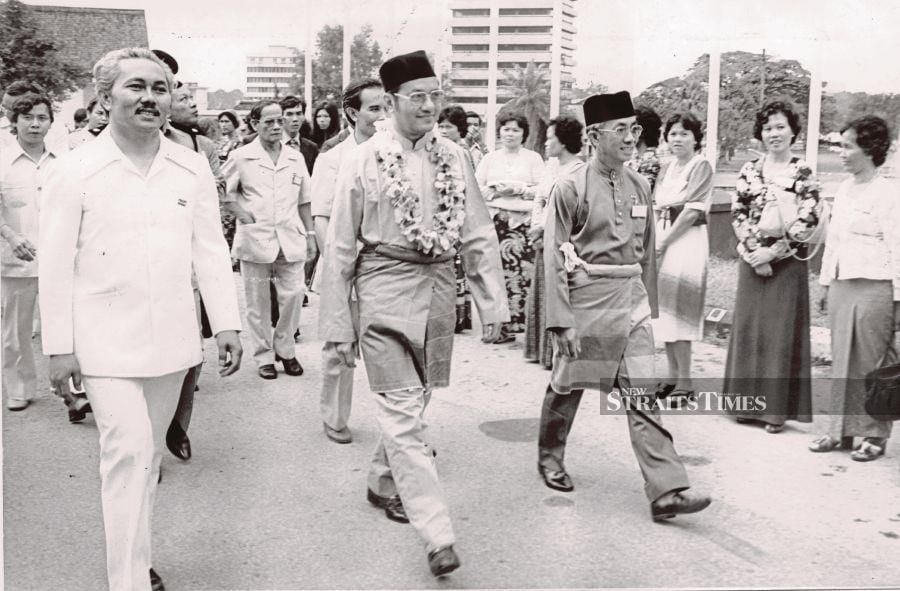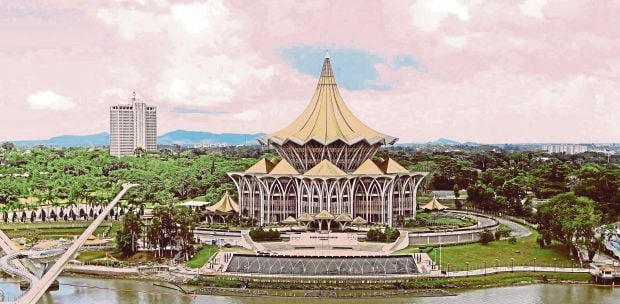It will be no hyperbole to say that the late Tun Abdul Taib Mahmud, the erstwhile Sarawak governor and chief minister, had touched the lives of virtually all living Sarawakians today, in ways big and small.
He was their head of state for the last 10 years and their chief minister for 33 years before that. He, in fact, became state minister back in 1963, the year the state became independent through Malaysia.
Taib's legacy thus looms over his state like no other individual leader's. The secret of his political longevity running parallel to his physical longevity thus is a fascinating story in and of itself.
That Taib lasted so long at the pinnacle of state leadership was especially remarkable given that he belonged to one of the many smaller ethnic groups, the Melanau.
To stand out, this group, especially if they are Muslim, often identifies with the more numerous Malays, sharing not just the same religious affiliation, but invariably adopting Malay customs, language and dress as well.
The Melanau can become so identified as Malays that together they are sometimes collectively categorised as Malay-Melanau.
This greatly suited aspiring political leaders like Taib and his predecessor-uncle, the late Tun Abdul Rahman Ya'kub, in a Malay-led political milieu such as Malaysia's.
It is common knowledge that Rahman, as federal education minister, was instrumental in entrenching Bahasa Malaysia as the national medium of instruction. Taib, on the other hand, as federal primary industries minister, played a key role in midwife of Petronas in 1974.
Such pivotal roles at the federal level earned the trust of federal leaders then and after a somewhat inconclusive state election, Kuala Lumpur tipped the scale for Rahman to emerge as Sarawak's third chief minister in 1970.
He stayed on for a decade before handing over the state leadership to Taib in 1981. Together, uncle and nephew were chief ministers continuously for 43 years!
All was not well for Taib right from the start of his taking over the reins of state leadership. Critical comments from the uncle grew in intensity and culminated in the infamous "Ming Court incident" of 1987, in reality a political coup instigated by the uncle against his nephew.
Taib saved the day by calling a fresh election, which he rather narrowly won.
Political observers have speculated ever since about this "family feud" and its provenance. It did appear like a very high-risk, even potentially suicidal move by two Melanau leaders in a notoriously heterogenous state that Sarawak is.
Was it actually a well-orchestrated sandiwara (drama) by the uncle to winnow out political hangers-on from his time with suspect loyalties to enable Taib to clean house?
Whatever, the fight looked fiercely real. Great fortunes — political and economic — were lost by those who identified with Rahman, including close kin.
Was it Machiavellian blood-letting to ease the way for Taib's consolidation of power?
In the end, blood proved thicker than water, and both uncle and nephew made up only after a credibly lengthy interval.
Whatever the truth behind the "Ming Court incident", the four-decades-plus stewardship of uncle and nephew has allowed a redeeming political narrative to be advanced: that the now half-century stranglehold on the state's top political post by the Muslim-Bumiputera wing of the ruling Parti Pesaka Bumiputera Bersatu is, in fact, in the tradition of power alternation by all the state's fragmented Bumiputera communities: the initial seven years of post-Malaysia Sarawak were helmed by Iban Dayak, followed by 43 years by Melanau (surely an anomaly of excessive power monopolisation?) and the last decade by Malays.
Whatever the true motivations behind the "Ming Court incident" and whether there was political collusion between uncle and nephew, it is undeniable that both of them had created a very durable "dynasty" that nevertheless afforded Sarawak an unprecedented era of political calm and certainty, which may be hard to replicate going forward.
* The writer views developments in the nation, region and wider world from his vantage point in Kuching






